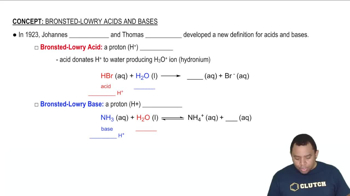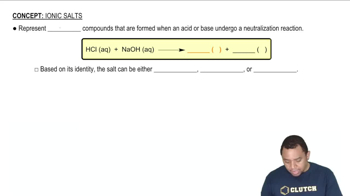Here are the essential concepts you must grasp in order to answer the question correctly.
Acid-Base Theory
Acid-base theory explains the behavior of acids and bases in solution. According to the Brønsted-Lowry theory, acids are proton donors while bases are proton acceptors. This concept is essential for classifying salt solutions, as the nature of the ions derived from the salts can influence the pH of the solution.
Recommended video:
Bronsted-Lowry Acid-Base Theory
Salt Hydrolysis
Salt hydrolysis occurs when a salt dissolves in water and its ions interact with water molecules, potentially altering the pH of the solution. Depending on the strength of the acid and base from which the salt is derived, the resulting solution can be acidic, basic, or neutral. Understanding hydrolysis is crucial for determining the pH of the given salt solutions.
Recommended video:
Equilibrium Constants
Equilibrium constants (K) quantify the extent of a reaction at equilibrium and are vital for predicting the behavior of acids and bases in solution. For example, the Kb of a base and the Ka of its conjugate acid can be used to assess the strength of the resulting solution. Appendix C provides these constants, which are necessary for classifying the salts in the question.
Recommended video:
 Verified step by step guidance
Verified step by step guidance

